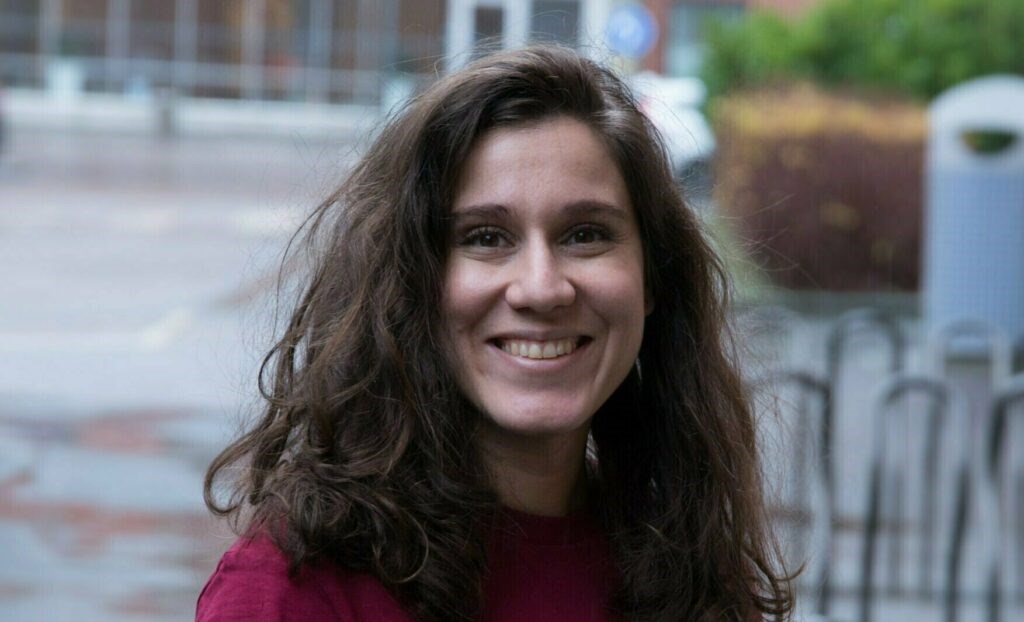Hello there, Maria Sakalaki!

You are a cardiologist who has completed an Innovation and Technology Fellowship Program. This summer you will go to Stanford University to participate in a research project combining heart health and AI, the Apple Watch Study. How did this happen?
- In the group of doctors who have completed the Innovation and Technology Fellowship Program, we work a lot with monitoring the progress in the field. Peter Kelly, who was responsible for the first group that completed the program, was in contact with Apple and the research group at Stanford.
We soon came to the conclusion that there might be an opportunity for collaboration in a smaller project around the data collection via the Apple Watch Study. Among other things, the group has looked at whether it is as good as the long-term ECG tool used today.
I will be away for about six weeks in May and June and have financed this trip through various scholarships, including a scholarship from Vinnova for research and innovation exchange.
The big reason why Stanford is interesting is because of its proximity to Silicon Valley and the tech industry. There are many other areas, but I find it unique that hospitals, universities and companies are located so close to each other.
What will you do?
- I will be part of a research group and work closely with the PhD students at Stanford to learn a little about how they work in various research projects. The intention is not to only work with traditional clinical research in my own project, but also to gain experience of how they use innovation and AI at Stanford and how far they have come - for example, how do the researchers make use of innovations from nearby Silicon Valley? In addition, I will hopefully also be able to network with the aim of increasing the exchange between Sahlgrenska University Hospital and Stanford.
Is this project connected to what you worked on within the residency in innovation and techonology or your own research in your doctoral studies?
- During the Innovation and Technology Fellowship Program, I worked on a project about how to transfer information from a pacemaker to a medical record system. Today, it is a procedure with many steps - I found that there is technology to simplify the procedure, but that the law creates obstacles because the data cannot pass through cloud services. So I'm interested in how data is handled and stored, and that's why it's interesting to study the Apple Watch. I see it is an opportunity to learn about how it works in the US, how it is handled at Stanford and who owns the data and more.
My own research at Sahlgrenska Academy deals with the prediction and prevention of myocardial infarction, so even if it is not directly related, my prior knowledge may be useful.
How does Sahlgrenska University Hospital need to work more to use technology to develop healthcare?
- I think a lot is about spreading knowledge about what opportunities exist within our region in West Sweden: digital health, AI center, Sense lab and the Innovation Department. It's also about taking advantage of the passionate people who have skills and interest, because we are early in the development and not only need to work with development but also with, for example, the law around AI and data storage.
I also don't think we should be afraid to start on a small scale. A lot of data is not always needed and we can make several advances with small means. We can work with simple projects that can unburden healthcare, which makes it safer for patients and easier for employees. I myself have learned a great deal in smaller projects, not least to create a network of contacts and skills to take on larger projects.
What is your advice to others who want to do research abroad?
- That it is possible! You can just pick up the phone, call and ask! That's how we did it. And it is possible to get funding by applying for scholarships. Be prepared that it will take time, but it will be worth the time and energy to put it together. And don't forget that it may be possible to bring the family along.
There is also support available within Sahlgrenska University Hospital, namely the Grants Office and Sahlgrenska International Care, which can provide some help along the way.
In short, the advice is that it is possible, but you have to be prepared for a bit of a roller coaster ride before everything is set to go.
What do you hope will be the result?
- I want to be motivated and inspired to better understand how we should build an organization to implement more technology in healthcare! I also hope to learn more about AI and get inspiration from how they work in the US.
It probably won't mean much for my own doctoral studies, but maybe I'll gain knowledge from various articles and statistics that can be used. I hope it will be a fruitful exchange, where I get the chance to make new friends and colleagues at Stanford, a network that more colleagues at Sahlgrenska University Hospital can benefit from.
But then you never know where it will lead. Participating in the Innovation and Technology Fellowship Program was like opening a door that led to this opportunity. Now we get to see what's behind this door.